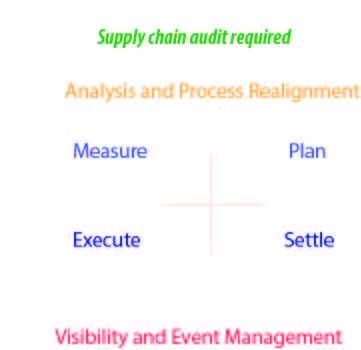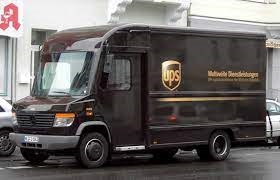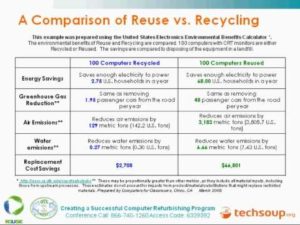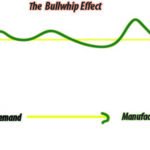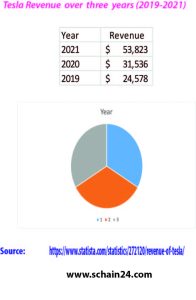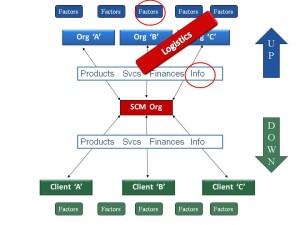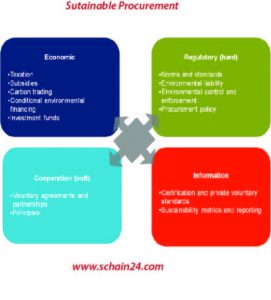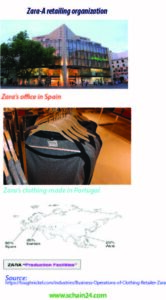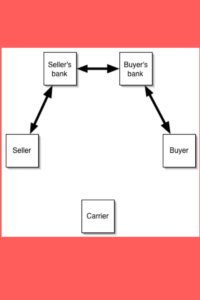Abstract
Decreasing the amount of packaging a firm is using can reduce waste and increase positive public perception of your organization. Ideally, a supply chain will be conscious of the cost-cutting importance of recycled materials. Taking an audit of packaging can reveal ways to “cut the fat” and make the packaging a lean machine that helps to keep the workflow moving along nicely. Many things happen in the supply chain that is hard to control. Technology in the warehouse, in transportation for inventory, and more is incredibly important but there are other smaller, less expensive steps that some companies have been using that not only optimize the chain but also save money and improve public perception. Every supply chain executive has the duty of auditing the process to make changes where improvements are possible. This is a simple plan to integrate into the system with the right packaging option. A common mistake that we find in many supply chains is the tendency to overpack goods for shipping and storage. The goal is to use packaging that delivers flexible options i.e., easy to manage, easy to store, does not generate waste and delivers the best value. When our supply chain is using packaging that the supply chain cannot reuse, we are essentially throwing good money after bad. According to statistics, there were over 35.4 million tons of paper and cardboard generated in 2016 and (16.3 million tons for each of these waste materials in 2016 and that was just in the EU! In the United States, packaging waste is around 77 million tons just in cardboard packaging waste. Even supply professionals who are not well-versed in packaging will understand the importance of using packaging that enhances workflow, and protection and reduces risk. In the perfect packaging scenario, our packaging needs to be recycled in the supply chain. The costs of waste generated by packaging materials are tremendous not just economically but environmentally as well.
Keywords: Supply chain optimization, Packaging, recycling, waste, firm.
Article:
Introduction
Supply and logistics are the backbone of any successful business. Look at Jeff Bezos and Amazon and how wildly successful that model has been, and it all comes down to innovative supply chain activities. It can be easy to overthink ways to optimize the supply chain and miss the smaller things that can have a big impact on efficiency, cost, and overall optimization.
Supply chain optimization
Technologies Are Not the Only Option
In today’s supply world technology is king. Most supply executives turn to modernization and technology to make their supply chain more efficient, which it does, but it is not the only answer. Technology in the warehouse, in transportation for inventory and more is incredibly important but there are other smaller, less expensive steps that some companies have been using that not only optimize the chain but save money and improve public perception.
Take an Audit
Every supply chain executive has the duty of auditing processes and taking a closer look at where improvements can be made. Unfortunately, when it comes to shipping and storage packaging a lot of executives take a back seat and leave it up to engineers and designers to manage. The fact is while designers and engineers are great at developing packaging that the end user will find appealing they are not the best source when it comes to efficiency and safety in the warehouse. Taking an audit of your packaging can reveal ways to “cut the fat” and make your packaging a lean machine that helps to keep the workflow moving along nicely.
Analyzing Your Packaging
There are a lot of things that happen in the supply chain that is hard to control. Weather and transportation delays, labor problems and more can slow things down and there is not a lot you can do to control it but there are some things that you can easily control like packaging.
Ask yourself the following questions during your overview of processes:
-
How much labor is dedicated to packaging goods?
-
How much waste is generated not only in the warehouse but at the end users as well?
-
Is your packaging fully recyclable?
-
How much use do you get out of your packaging?
-
Can your packaging be reinserted into the supply chain and used again?
-
What does your inner packaging process look like?
Labor is a cost that you simply cannot avoid While it may not be possible to cut labor costs it is possible to get more value out of your labor costs. If packaging processes require more than one laborer to handle then you are wasting money.
Packaging waste is a tremendous worldwide issue. According to statistics, there were over 35.4 million tons of paper and cardboard generated in 2016 and (16.3 million tons of each of these waste materials in 2016 and that was just in the EU! In the United States, packaging waste is around 77 million tons just in cardboard packaging waste. It is absolutely astounding how much waste is generated when it does not need to be. When your supply chain is using packaging that cannot be reused you are essentially throwing good money after bad. Of course, the “cost” of waste can be measured in several different ways, none of which are good for any business. The costs of waste generated by packaging materials are tremendous not just economically but environmentally as well. Consumer watch groups and regulatory bodies are demanding change. Decreasing the amount of packaging your firm is using can reduce waste and increase positive public perception of your organization.
Can your packaging be recycled fully? What are the materials that you depend on? Are they plastics, cardboard, or other materials that are unnecessary and not easily recycled? Ideally, your chain will be conscious of the cost-cutting importance of recycled materials.
Reusability
In the perfect packaging scenario, your packaging is returned to you via a vendor return program so that it can be reinserted into your supply chain. Efficiency, cost-effectiveness, and reusability all go hand in hand. Reusing packaging comes with tremendous savings and helps to get increased ROI on packaging costs. this is a simple plan to integrate into your system with the right packaging option.
Is Your Supply Chain Making the Mistake of Overpackaging?
A common mistake that you find in many supply chains is the tendency to overpack goods for shipping and storage. Multi-layers of packaging rarely deliver the cost-effective protection that you want for your products, all it does is ring up costs.
Packaging Goals
Even supply professionals that are not well-versed in packaging will understand the importance of using packaging that enhances workflow, and protection and that reduces risk. The goal is to use packaging that: Delivers flexible options, is easy to manage, is easy to store, does not generate waste, and Delivers the best value. Simply put optimizing your packaging, optimizes the supply chain. The right packaging will offer features like flexible shipping and storage capabilities. It will be easy to manage and not require additional machinery to be installed. It will be fully recyclable, reusable, and repairable. It will generate the best value and provide a high return on the investment.
Have You Been Overlooking the Possibilities of Wooden Pallet Collars?
Everyone in the supply chain from the junior-most employee to the executive officers understands the value of the simple wooden pallet. Pallets are the standardized method of conveying goods from one place to the next whether by land, sea, or air but not everyone has been exposed to how a pallet collar can transform a pallet into a solution. When you add something as simple as a pallet collar to a wooden pallet, you can discard much of the rest of the packing materials that you use. These systems create a strong wooden box that can be adjusted to your product’s specific needs.
Conclusion:
By stacking collars one to the other, you can adjust the depth of this “box”. No tools or special equipment is required. They are stored easily because they fold flat until you need them. They can hold a great deal of weight, so you can take advantage of vertical storage space in the warehouse with confidence. They come with a service life expectancy of about 10 years, they are completely reusable, and they are durable. Sometimes, overlooking the simplest tool can be your biggest mistake, or taking an approach that it is not your issue to consider. Learning more about pallet collars can change how your supply chain does business!
- SEO Powered Content & PR Distribution. Get Amplified Today.
- PlatoData.Network Vertical Generative Ai. Empower Yourself. Access Here.
- PlatoAiStream. Web3 Intelligence. Knowledge Amplified. Access Here.
- PlatoESG. Carbon, CleanTech, Energy, Environment, Solar, Waste Management. Access Here.
- PlatoHealth. Biotech and Clinical Trials Intelligence. Access Here.
- Source: https://www.schain24.com/2023/10/25/what-supply-professionals-are-overlooking-when-it-comes-to-optimization/
- :has
- :is
- :not
- :where
- $UP
- 1
- 10
- 16
- 2016
- 35%
- 361
- 77
- a
- About
- absolutely
- ABSTRACT
- According
- activities
- add
- Additional
- adjust
- Adjusted
- ADvantage
- After
- again
- AIR
- All
- along
- also
- Amazon
- amount
- an
- and
- answer
- any
- appealing
- approach
- ARE
- around
- article
- AS
- astounding
- At
- audit
- auditing
- auto
- avoid
- back
- Backbone
- Bad
- BE
- because
- been
- BEST
- bezos
- Big
- Biggest
- bodies
- Box
- business
- but
- by
- CAN
- cannot
- capabilities
- chain
- chains
- change
- Changes
- closer
- Collars
- COM
- come
- comes
- Common
- Companies
- completely
- conclusion
- confidence
- conscious
- Consider
- consumer
- control
- Cost
- cost-effective
- Costs
- course
- create
- Cut
- deal
- decreasing
- dedicated
- delays
- deliver
- delivers
- demanding
- depth
- designers
- developing
- different
- do
- does
- down
- during
- e
- each
- easily
- easy
- efficiency
- efficient
- Employee
- end
- Engineers
- Enhances
- environmentally
- equipment
- essentially
- Even
- Every
- everyone
- executive
- executives
- expensive
- exposed
- fact
- Features
- Find
- Firm
- flat
- flexible
- following
- For
- from
- fully
- generate
- generated
- get
- Go
- goal
- good
- Good Money
- goods
- great
- Group’s
- hand
- handle
- happen
- Hard
- Have
- helps
- High
- hold
- How
- HTTPS
- i
- ideally
- if
- Impact
- importance
- important
- improve
- improvements
- in
- Increase
- increased
- incredibly
- innovative
- integrate
- into
- Introduction
- inventory
- investment
- issue
- IT
- jeff bezos
- jpg
- just
- Keep
- King
- labor
- Land
- learning
- Leave
- less
- Life
- like
- Look
- look like
- Lot
- machine
- machinery
- made
- make
- Making
- manage
- many
- materials
- max-width
- May..
- measured
- method
- million
- miss
- mistake
- model
- modernization
- money
- more
- more efficient
- most
- moving
- much
- Need
- needs
- next
- no
- None
- of
- offer
- officers
- on
- ONE
- only
- optimization
- Optimize
- Optimizes
- optimizing
- Option
- Options
- or
- organization
- Other
- our
- out
- over
- overall
- overview
- packaging
- Paper
- perception
- perfect
- Place
- plan
- plastics
- plato
- Plato Data Intelligence
- PlatoData
- positive
- possibilities
- possible
- problems
- process
- processes
- Products
- professionals
- Program
- protection
- provide
- public
- put
- Questions
- rarely
- recycled
- recycling
- reduce
- reduce waste
- reduces
- regulatory
- require
- required
- REST
- return
- reusable
- reuse
- reveal
- right
- Ring
- Risk
- ROI
- Safety
- Save
- Savings
- scenario
- SEA
- service
- several
- Shipping
- Simple
- simply
- slow
- smaller
- So
- solution
- some
- something
- sometimes
- Source
- Space
- special
- specific
- standardized
- States
- statistics
- Steps
- storage
- store
- stored
- strong
- successful
- supply
- supply chain
- Supply Chain Optimization
- Supply chains
- system
- Systems
- Take
- taking
- Technology
- than
- that
- The
- their
- Them
- then
- There.
- These
- they
- things
- this
- Throwing
- to
- today’s
- tons
- tool
- tools
- Transform
- transportation
- tremendous
- true
- TURN
- understand
- understands
- unfortunately
- United
- United States
- until
- use
- used
- User
- users
- using
- value
- vendor
- vertical
- via
- want
- Warehouse
- was
- Waste
- Watch
- ways
- we
- Weather
- weight
- WELL
- were
- What
- when
- whether
- which
- while
- WHO
- will
- with
- wooden
- workflow
- world
- worldwide
- years
- you
- Your
- yourself
- zephyrnet

